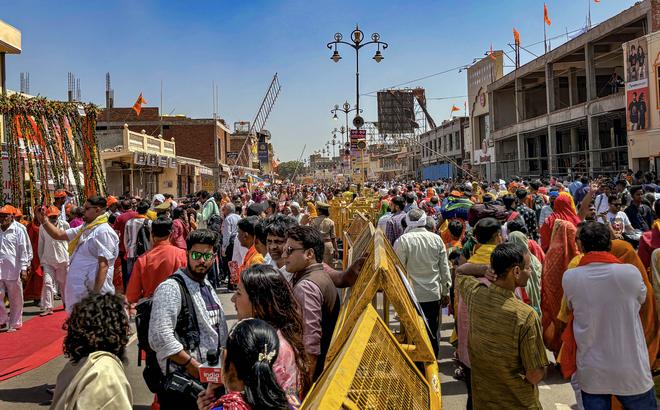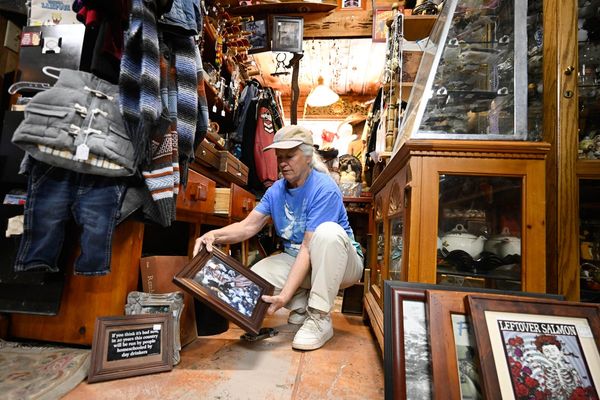On the occasion of Ram Navami, ‘Surya Abhishek’ of Ram Lalla in Ayodhya temple was held precisely at noon for about three minutes on April 17.
The ‘Surya Tilak’ or ‘Surya Abhishek’ refers to a ray of sunlight made to fall on the idol’s forehead on a designated day, in this case, Ram Navami, believed to be the birthday of Lord Ram that usually falls during March or April.
Also Read | PM greets people on Ram Navami, says ‘Ayodhya is in incomparable bliss’
This is the first time that Ram Lalla celebrated Ram Navami in the grand temple. Devotees from all over the country and the world came to Ayodhya for the occasion.
Chants of Jai Shri Ram across Ayodhya
The temple trust had commissioned a team of scientists to make this occasion possible. To achieve this phenomenon, sunlight was precisely directed onto the statue’s forehead using a combination of mirrors and lenses. This was carried out precisely at 12 noon for about three minutes.
Even as Ram Lala was to be anointed with the ‘Surya Tilak’, Prime Minister Narendra Modi made a reference to the historic occasion in his election rally at Nalbari Assam. With a chant of Jai Siyawar Ram the PM said “Today is the historic occasion of Ram Navami. After waiting for 500 years, Lord Ram has been seated in his grand temple. Now after a few minutes, by applying ‘Surya Tilak’ to Lord Ram, his birth anniversary will be celebrated in the holy city of Ayodhya, in the Ram Temple.”
The moment of the ‘Surya Tilak’ had devotees in raptures as chants of Jai Shri Ram were heard across Ayodhya and even in temples across the country.

Devotees broke out into song and dance outside the Ram Janambhoomi Mandir. This is the first Ram Navami after the Pran Pratishtha of the idol of Lord Ram by PM Modi on January 22 in Ayodhya. Ram Navami is being celebrated with great pomp at Ram Janambhoomi Mandir with offerings of 56 types of bhog, prasad and panjiri.
How does the ‘Surya tilak’ mechanism work?
The “Surya Tilak” of Ram Lalla became possible through an elaborate system connected with mirrors and lenses in the Ram Temple. The CSIR-Central Building Research Institute in Roorkee ”majorly contributed towards the structural design of the main temple, designing ‘Surya Tilak’ mechanism, design-vetting of temple foundation, and monitoring the structural health of the main temple,” Science and Technology Minister Jitendra Singh had said.
The DST-Indian Institute of Astrophysics, Bengaluru also provided “technical support” to triangulate the sun rays and the idol’s position for the ‘Surya Tilak’. Optica, a Bengaluru-based company specialising in precision instruments, was involved in manufacturing the lenses and brass tubes.
“Gear box and reflective mirrors/lenses have been arranged such that sun rays will be deflected to Garbha Griha (sanctum sanctorum) using well known principles of tracking Sun’s path,” Mr. Singh added.
(With agency inputs)







